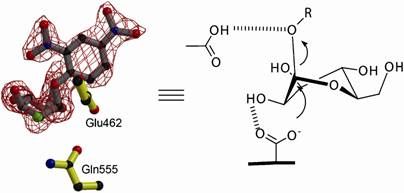Think green, UO's Hutchison says, to reduce nanotech hazards
Advertisement
The University of Oregon's Jim Hutchison, holding three patents in the emerging field of nanotechnology, embraces a strong call for exploring potential environmental and health implications, which he says could be many, and for designing new materials with reduced hazard. The available data, he notes, are often uncertain or in conflict. He urges the industry to adopt a proactive approach now, before unforeseen roadblocks threaten the technology's progress.
"The absence of data or seemingly conflicting data - for example, research articles and subsequent media reports that contribute to uncertainty about the hazards of carbon nanotubes - reduce public confidence in product safety and invigorate activist groups that aim to prevent the use of nanomaterials in products of commerce," he writes in ACS Nano, an international journal of the American Chemical Society.
"Without relevant data, innovators are forced to rely on 'reasonable worst-case scenarios' in applying risk-management frameworks or may not discover product hazards until late in product development," Hutchison writes. "The lack of information on material safety hinders innovation and places companies at considerable risk of failure."
Nanomaterials are complex, as are their interactions with biological organisms and the environment. While microscopically sized, they come in all sizes, shapes and compositions. "To confound the situation further," he writes, "the methods of production are still immature for most materials, often resulting in batch-to-batch variability in composition and purity." Impurities, he says, are hard to detect, difficult to extract and may obscure the real effects of nanomaterials.
In his article, Hutchison argues that "interdisciplinary teams that partner life, environmental and nanomaterial scientists need to work together to define standard approaches and share expertise to accelerate the collection of definitive data on nanomaterial hazards."
Researchers need to come out of isolated labs, Hutchison says, and work collaboratively to address design, synthesis, characterization, and biological and environmental impacts. He praises an early effort to just that: the Nanotechnology Characterization Laboratory, a collaborative effort of the National Cancer Institute, National Institute of Standards and Technology and the Food and Drug Administration. He also notes the new federally funded NanoHealth Enterprise Initiative.
In ACS Nano, Hutchison addresses how green chemistry can reduce byproducts and simplify purification. He cites, as an example, how a particular material, using conventional chemistry, takes three days to purify and results in 15 liters of solvent per gram of nanoparticle. Using a green chemistry approach, he notes, the same thing is done in 15 minutes, and "the purification method can effectively reduce solvent consumption and provide cleaner, well-defined building blocks."
The time to implement green chemistry into nanotechnology is now, he says, before the industry exits its discovery phase, in which only small quantities of nanomaterials have been produced, and enters the production phase that will require the production of large quantities of nanomaterials that may pose potentially industry-stopping health and environmental problems.
Hutchison explains how the 12 principles of green chemistry can guide the design, production and use of nanomaterials. A green-chemistry approach, he says, should initially focus on determining the hazards of a narrow subset of nanomaterials that are closest to commercialization.
"Although these materials warrant immediate attention," he writes, "the information received from these studies will not provide enough correlations between nanomaterial structure and material hazard to design alternatives to those materials found to have an unacceptable level of hazard. A broader focus is needed to determine the design rules so that (re)design for product safety does not stall innovation and commercialization."
Other news from the department politics & laws
Most read news
More news from our other portals
See the theme worlds for related content
Topic world Synthesis
Chemical synthesis is at the heart of modern chemistry and enables the targeted production of molecules with specific properties. By combining starting materials in defined reaction conditions, chemists can create a wide range of compounds, from simple molecules to complex active ingredients.

Topic world Synthesis
Chemical synthesis is at the heart of modern chemistry and enables the targeted production of molecules with specific properties. By combining starting materials in defined reaction conditions, chemists can create a wide range of compounds, from simple molecules to complex active ingredients.
































































